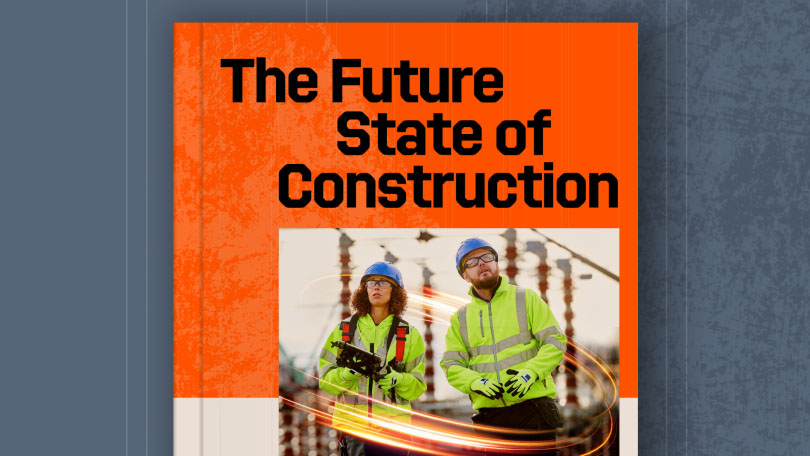— 9 min read
Value Engineering vs Cost Cutting: What Really Sets Them Apart?
Last Updated Oct 23, 2025
Brendan McGurk
Strategic Product Consultant - Construction Financials
20 articles
"Brendan is a Strategic Product Consultant for Procore Financials, where he enjoys leading and innovating internal company processes to deliver on both public and private projects. He brings 12 years of experience working in various construction roles ranging from builder's hand to quantity surveyor and project manager on both the owner and main contractor side.
Originally studying Accounting, he changed direction to quantity surveying after the Christchurch Earthquake in 2011. He is now qualified and an NZIQS-recognised Quantity Surveyor. He’s since worked on projects from feasibility, concept design, and value engineering right through to construction and post-construction support.
Nicholas Dunbar
Content Manager
62 articles
Nick Dunbar oversees the creation and management of UK and Ireland educational content at Procore. Previously, he worked as a sustainability writer at the Building Research Establishment and served as a sustainability consultant within the built environment sector. Nick holds degrees in industrial sustainability and environmental sciences and lives in Camden, London.
Zoe Mullan
27 articles
Zoe Mullan is an experienced content writer and editor with a background in marketing and communications in the e-learning sector. Zoe holds an MA in English Literature and History from the University of Glasgow and a PGDip in Journalism from the University of Strathclyde and lives in Northern Ireland.
Last Updated Oct 23, 2025

In an industry under constant pressure to deliver on budgets, timelines and performance, value engineering (VE) has become a non-negotiable for construction teams. Rather than simply cutting costs, VE focuses on delivering smarter, innovative solutions that balance cost, utility and performance.
From early brainstorming sessions to technologies like Building Information Modelling (BIM) and artificial intelligence, VE develops collaboration and problem-solving that optimises resources without sacrificing quality.
Table of contents
Understanding Value Engineering
Value engineering goes beyond saving money. First and foremost, it asks you to step back and consider what value means to your project – both in the short and long term. You then formulate a plan for achieving this in the smartest way possible, without cutting corners.
Value engineering takes a systematic approach to balancing cost, utility and performance to maximise project value. Unlike cost-cutting, which sacrifices quality, VE ensures better outcomes by optimising resources, design and materials.
Three Core Components: Cost, Utility & Performance
Cost
Rather than focusing solely on upfront expenses, VE considers life cycle costs – how much materials will cost to maintain and operate over time. For example, a slightly pricier, durable material might save significant maintenance costs long-term.
Utility
Utility ensures functionality without excess. Teams reassess project requirements to eliminate inefficiencies. For instance, redesigning slope stabilisation could prevent costly over-engineering while delivering the same performance.
Performance
Performance ensures quality outcomes. VE helps projects meet safety and reliability standards efficiently without inflating costs.
The Six-Phase VE Process
VE follows a structured six-phase approach that guides teams from initial planning through to final recommendations:
Pre-Study Phase
Teams define the project's scope, goals and constraints. Since VE works best when you establish strict parameters, setting clear objectives at this early stage – whether that's cost limits, performance needs or timelines – prevents wasted effort down the track.
Information Phase
Next, teams gather data, analyse project requirements and identify where improvements are possible. They evaluate project components to uncover opportunities for optimisation. For example, they might review a project's energy systems to identify more efficient alternatives.
Creative Phase
Here's where the real brainstorming happens. The team generates alternative solutions to achieve the same (or better) performance at a lower cost. This phase encourages outside-the-box thinking and requires the right mix of expertise. For instance, a structural engineer might spot a smart design option that an architect working alone would miss.
Evaluation Phase
Teams then assess each idea based on feasibility, cost savings and overall value. Again, collaboration is critical because you're not just looking for savings – you're weighing trade-offs across utility and performance, too.
Development Phase
Following evaluation, teams develop solutions into actionable plans with detailed estimates, programmes and specifications. They present clear justifications for each recommendation.
Presentation Phase
Finally, teams present recommendations to stakeholders – often as a detailed VE report – so all parties understand the changes, benefits and rationale behind them.
Key Roles in Value Engineering
VE requires collaborative input from multiple stakeholders and construction teams, each playing a distinct role:
Clients
- Role: Define the project's objectives, budget and constraints.
- Responsibilities: Provide a clear vision of what the project must achieve and remain engaged throughout the VE process to review and approve recommendations.
- Why they matter: Clients ultimately determine priorities – upfront savings, life cycle value or sustainability.
Designers/Architects
- Role: Develop the project's conceptual design and technical plans.
- Responsibilities: Collaborate with other stakeholders to adjust designs based on VE recommendations, ensuring no compromise on the project's vision or functionality.
- Why they matter: Designers maintain design integrity while incorporating cost-effective and innovative solutions.
Main Contractors
- Role: Provide practical, construction-focused insights.
- Responsibilities: Evaluate material and method recommendations, assess feasibility and ensure VE changes can be executed efficiently on site.
- Why they matter: Contractors bring a boots-on-the-ground perspective, identifying practical opportunities for savings without sacrificing quality.
Quantity Surveyors
- Role: Benchmark costs and validate life cycle savings before options reach the client.
- Responsibilities: Use cost data to test VE proposals against budget allowances and market rates.
- Why they matter: Their financial rigour keeps VE rooted in commercial reality.
Value Engineering Specialists
- Role: Lead the VE process and provide expertise in cost analysis, performance evaluation and alternative design solutions.
- Responsibilities: Analyse project components, suggest optimisations and coordinate brainstorming, evaluation and final reporting phases.
- Why they matter: Specialists drive the systematic approach needed to identify and prioritise value-enhancing opportunities.
Engineers (Structural, Civil, Mechanical, etc.)
- Role: Contribute technical expertise to assess the performance and feasibility of proposed solutions.
- Responsibilities: Validate design adjustments to ensure they meet performance and safety standards.
- Why they matter: Engineers ensure VE recommendations remain technically sound and comply with regulations.
Pro Tip
Communication breakdowns lead to half-baked solutions. Get everyone on the same page early on to keep VE focused and effective. This approach also delivers:
- Better decisions: Teams align on goals and share insights
- Fewer errors: Early communication prevents costly rework
- Smarter solutions: Collaboration sparks creative, value-driven ideas
VE Techniques & Tools
Value engineering uses a mix of proven techniques and modern tools to identify opportunities for improving value. These methods encourage creative solutions, informed decision-making and practical implementation.
Common Techniques
Function Analysis System Technique (FAST)
FAST diagrams break a project down into individual functions to clarify how each element contributes to the overall goal.
Brainstorming and Idea Generation
Group sessions help uncover opportunities that traditional methods might overlook.
Cost-Benefit Analysis
This technique weighs the costs of proposed changes against long-term benefits, including maintenance, durability and sustainability.
Software and Tools
Modern tools play a key role in facilitating the VE process by streamlining analysis and collaboration:
- Building Information Modelling (BIM) – ISO 19650-compliant BIM models keep VE data shareable and auditable.
- Cost estimation software – Detailed cost analysis helps teams compare options and predict long-term savings.
- Collaboration platforms – Procore's project-management tools centralise communication, ensuring alignment when evaluating VE recommendations.
Benefits of Value Engineering
Value engineering delivers significant benefits to construction projects, balancing cost, utility and performance to achieve better outcomes. These benefits span both tangible gains – like cost savings – and intangible improvements, such as enhanced collaboration and innovation.
Creates Cost Savings
VE minimises unnecessary expenses by identifying smarter solutions early in the process. For example, replacing traditional steel beams with lighter, prefabricated components might reduce costs without impacting structural integrity.
Improves Project Efficiency
By eliminating over-engineering and optimising resources, VE keeps projects on track and within budget. These improvements extend to programme, material use and workforce allocation.
Enhances Collaboration
VE enables better communication amongst stakeholders. Early collaboration ensures that teams understand project goals and explore innovative solutions together.
Increases Innovation
By encouraging creative problem-solving, VE helps teams think outside the box and identify solutions they might otherwise overlook.
Reduces Risk
Early VE identifies potential design flaws before they escalate into costly issues. This approach mitigates programme risk, boosts labour productivity and turns cost data into actionable insight.
Common VE Challenges
Despite it's significant benefits, VE does have its challenges. Misconceptions, resistance to change and poor timing can limit its effectiveness and even derail a project.
Misconceptions About VE
One hurdle is the perception that VE simply cuts costs. Educating teams on the true purpose of VE – achieving the best outcome – helps overcome this resistance.
Integration into Traditional Processes
Rigid workflows can resist revisiting designs. Successful VE relies on clear communication and buy-in from all stakeholders.
Late Implementation
When teams introduce VE late – during or after construction begins – its benefits shrink and challenges grow, disrupting programmes and frustrating clients.
UK Legal & Contractual Considerations
Under most JCT contracts, VE changes trigger Clause 13, requiring the contractor to submit a formal proposal to the employer's agent. On public works, the Public Contracts Regulations 2015 oblige teams to prove that VE alternatives still meet the original specification.
Any VE change affecting fire strategy must comply with the Building Safety Act 2022 gateway process.
VE in Practice: Examples
- Switching to UK-sourced cross-laminated timber could significantly cut haulage distances and shave costs off the frame package.
- A Manchester hotel could swap in a volumetric bathroom pod, reducing snagging time by two weeks.
- Re-orientating glazing to the south-west can lower heating demand without extra capital cost.
- Switching to a composite deck could save on structural floor costs.
The Value Formula
Put simply, value = function ÷ cost (£). If a lighting scheme delivers 500 lux for £15 /m² instead of 400 lux for £18 /m², the value score improves.
The Future of Value Engineering
Emerging trends, innovative technologies and new approaches are shaping how VE delivers value across projects:
Sustainability and Green Construction
Increasing pressure to meet environmental targets is pushing VE towards sustainable solutions that lower emissions, reduce waste and improve energy efficiency over the project life cycle. Part L 2021 demands a 31% reduction in operational carbon – VE helps teams meet that goal.
Modular and Prefabricated Construction
Prefabrication and modular techniques streamline processes and reduce both costs and programmes. Teams can identify efficiencies upfront and implement them in controlled factory environments.
Data-Driven Decision Making
With the rise of digital tools, VE now relies heavily on data. Historical project data, simulations and predictive analytics inform better decisions.
Value engineering can shape the future of construction. VE has evolved beyond a tool for managing costs – it's now a forward-thinking approach that blends innovation and technology to maximise project value. By embedding VE early in the project life cycle, teams can align on objectives, explore creative solutions and balance cost, utility and performance without compromising quality.
Start Your VE Journey Today
Unlike spreadsheet-based workflows, Procore captures live cost data for instant VE reporting.
If you're not ready commit right now, download our free UK Bill-of-Quantities template to kick-start your VE workbook:
Free Download
Bill of Quantities Template
Many construction professionals in charge of creating a Bill of Quantities use templates such as this to make the process more efficient and simple. They use common data processing computer programmes for organising and calculation, removing some of the problems associated with human error.
- Free starter template
- Ready-to-use
- Trusted by construction professionals


FAQs
What is value engineering in UK construction?
VE is a structured process that maximises value – balancing cost, utility and performance – while meeting UK regulations and client objectives.
When should VE take place during the RIBA Plan of Work?
VE delivers the greatest pay-back before RIBA Stage 3 (Spatial Coordination), when design changes are least disruptive.
Does VE compromise quality?
No. When teams execute VE properly, it enhances value without reducing quality, and must still satisfy Building Regulations and the project brief.
Written by
Brendan McGurk
Strategic Product Consultant - Construction Financials | Procore
20 articles
"Brendan is a Strategic Product Consultant for Procore Financials, where he enjoys leading and innovating internal company processes to deliver on both public and private projects. He brings 12 years of experience working in various construction roles ranging from builder's hand to quantity surveyor and project manager on both the owner and main contractor side.
Originally studying Accounting, he changed direction to quantity surveying after the Christchurch Earthquake in 2011. He is now qualified and an NZIQS-recognised Quantity Surveyor. He’s since worked on projects from feasibility, concept design, and value engineering right through to construction and post-construction support.
Reviewed by
Nicholas Dunbar
Content Manager | Procore
62 articles
Nick Dunbar oversees the creation and management of UK and Ireland educational content at Procore. Previously, he worked as a sustainability writer at the Building Research Establishment and served as a sustainability consultant within the built environment sector. Nick holds degrees in industrial sustainability and environmental sciences and lives in Camden, London.
View profileZoe Mullan
27 articles
Zoe Mullan is an experienced content writer and editor with a background in marketing and communications in the e-learning sector. Zoe holds an MA in English Literature and History from the University of Glasgow and a PGDip in Journalism from the University of Strathclyde and lives in Northern Ireland.
View profileExplore more helpful resources

Control the Chaos: Standardising Document Workflows in Construction Projects
Document control and implementation play a central role in managing risk, meeting deadlines, and delivering projects to spec. As builds become more complex and teams increasingly disperse, the volume and...

Cost-Plus Construction Contracts in the UK
A construction cost-plus contract – sometimes called a cost-reimbursable or prime cost contract – reimburses all project costs and adds a fee to cover the contractor’s overhead and profit. UK...

Digital Construction Technology for Whole-Life Value
For decades, the construction industry has kept a narrow focus on capital cost — the one-time, upfront costs of a construction project. While in the short term this seems like...

UK Construction Progress Reports: Tools for Smarter Site Management
Construction progress reports track completed work, on site issues, costs, and safety so UK project teams can demonstrate progress, secure payments, and stay on programme. Accurate progress data is essential...
